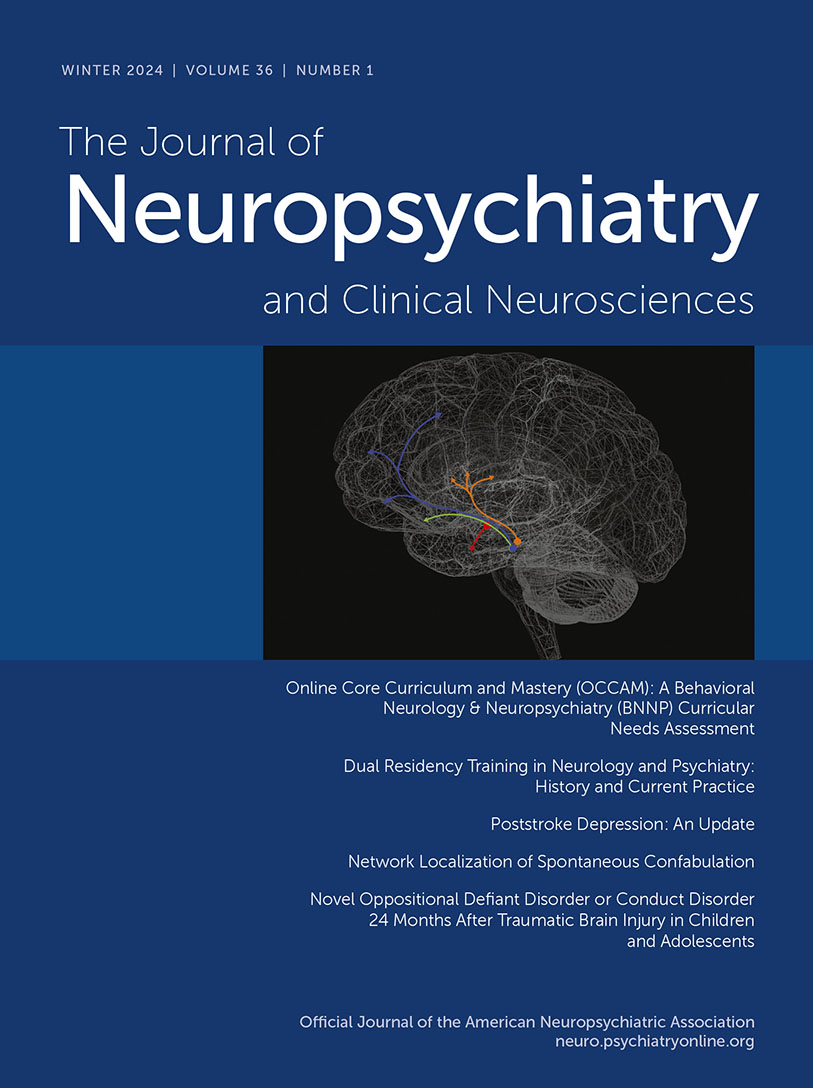Factors Associated With Anxiety After Hemorrhagic Stroke
Abstract
Objective:
A significant number of patients develop anxiety after stroke. The objective of this study was to identify risk factors for anxiety after hemorrhagic stroke that may facilitate diagnosis and treatment.
Methods:
Patients admitted between January 2015 and February 2021 with nontraumatic hemorrhagic stroke (intracerebral [ICH] or subarachnoid [SAH] hemorrhage) were assessed telephonically 3 and 12 months after stroke with the Quality of Life in Neurological Disorders Anxiety Short Form to evaluate the relationships between poststroke anxiety (T score >50) and preclinical social and neuropsychiatric history, systemic and neurological illness severity, and in-hospital complications.
Results:
Of 71 patients who completed the 3-month assessment, 28 (39%) had anxiety. There was a difference in Glasgow Coma Scale (GCS) scores on admission between patients with anxiety (median=14, interquartile range [IQR]=12–15) and those without anxiety (median=15, IQR=14–15) (p=0.034), and the incidence of anxiety was higher among patients with ICH (50%) than among those with SAH (20%) (p=0.021). Among patients with ICH, anxiety was associated with larger median ICH volume (25 cc [IQR=8–46] versus 8 cc [IQR=3–13], p=0.021) and higher median ICH score (2 [IQR=1–3] versus 1 [IQR=0–1], p=0.037). On multivariable analysis with GCS score, hemorrhage type, and neuropsychiatric history, only hemorrhage type remained significant (odds ratio=3.77, 95% CI=1.19–12.05, p=0.024). Of the 39 patients who completed the 12-month assessment, 12 (31%) had anxiety, and there was a difference in mean National Institutes of Health Stroke Scale scores between patients with (5 [IQR=3–12]) and without (2 [IQR=0–4]) anxiety (p=0.045). There was fair agreement (κ=0.38) between the presence of anxiety at 3 and 12 months.
Conclusions:
Hemorrhage characteristics and factors assessed with neurological examination on admission are associated with the development of poststroke anxiety.
Access content
To read the fulltext, please use one of the options below to sign in or purchase access.- Personal login
- Institutional Login
- Sign in via OpenAthens
- Register for access
-
Please login/register if you wish to pair your device and check access availability.
Not a subscriber?
PsychiatryOnline subscription options offer access to the DSM-5 library, books, journals, CME, and patient resources. This all-in-one virtual library provides psychiatrists and mental health professionals with key resources for diagnosis, treatment, research, and professional development.
Need more help? PsychiatryOnline Customer Service may be reached by emailing [email protected] or by calling 800-368-5777 (in the U.S.) or 703-907-7322 (outside the U.S.).



